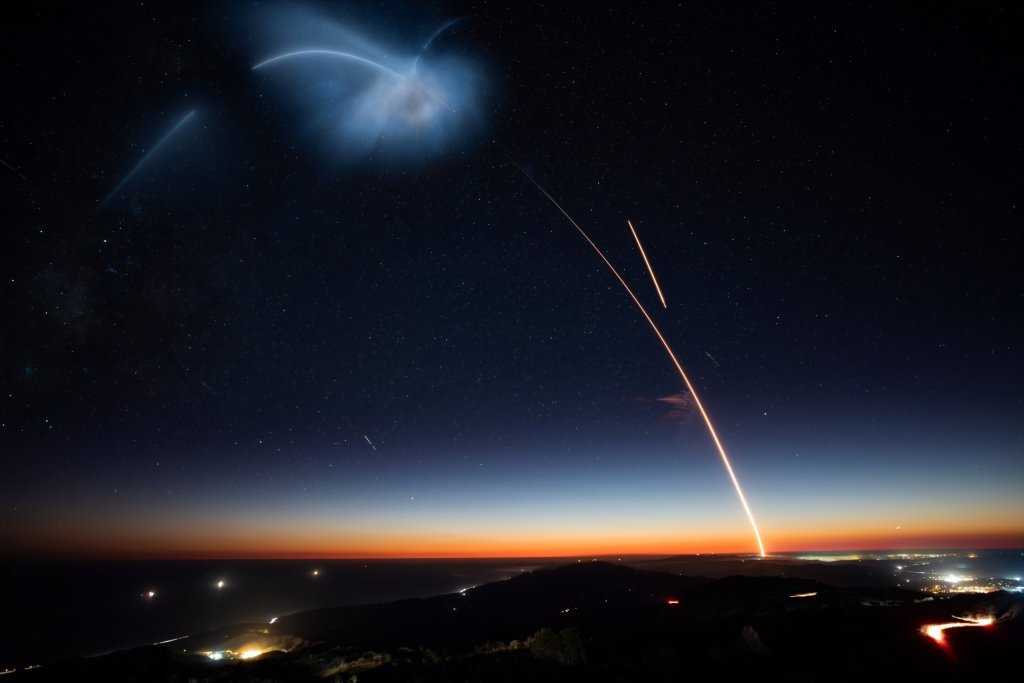
Planned launch has SpaceX back on task on Space Coast (Image Credit: Phys.org)

SpaceX handed over the Space Coast spotlight for a short time last week with United Launch Alliance managing an Atlas V liftoff for Amazon, but Elon Musk’s company is back to the business of sticking more of its Starlink satellites into orbit.
A Falcon 9 rocket with 22 more of its second-generation of internet satellites is slated to lift off from Cape Canaveral Space Force Station’s Space Launch Complex 40 at 9:18 p.m. with five backup windows from 9:57 p.m. through 12:35 a.m. Monday and another six backups Monday night starting at 8:42 p.m. running through early Tuesday at 12:10 a.m.
Space Launch Delta 45’s weather squadron forecasts an 80% chance for good conditions and 95% chance in the event of a 24-hour delay.
The first-stage booster for the mission is making its 14th flight, and will attempt another recovery landing on the droneship A Shortfall of Gravitas down range in the Atlantic.
It would mark the 55th launch by all companies from the Space Coast in 2023 with all but four coming from SpaceX. ULA has managed three including the Amazon launch on Friday while startup Relativity Space launches its 3D-printed Terran 1 rocket back in March.
It’s the first of at least two SpaceX launches planned this week from the Space Coast with what is planned to be the fourth Falcon Heavy launch of the year from neighboring Kennedy Space Center on what would be that rocket’s first NASA mission ever. The mission is launching a probe named Psyche on a multiyear trip to a metal-rich asteroid of the same name between Mars and Jupiter targeting a Thursday liftoff at 10:16 a.m.
The majority of SpaceX launches, though, have been Falcon 9’s, mostly for Starlink and mostly from Cape Canaveral.
It’s one of two Starlink launches from two coasts planned for SpaceX that could go up within hours of one another. Another Falcon 9 from Vandenberg Space Force Base’s Space Launch Complex 4 East in California is targeting a 3:23 a.m. EDT Monday, (12:23 a.m. PDT) to add another 21 satellites to the constellation that has had more than 5,200 launched since the first operational units went up in 2019.
The new versions are called v2 mini, which are larger than the original Starlinks. Earlier launches would put around 60 of them into orbit per launch, but Falcon 9 rockets can only fit about 22 per launch.
SpaceX had planned to develop a much larger Starlink satellite and use its in-development Starship to get them to orbit, but delays in getting Starship into space has meant a shift in plans to grow the company’s constellation and its business of providing global internet, which Musk last week confirmed was approaching 2 million customers.
It’s still by far the biggest in orbit, but the Atlas V launch for Amazon put up that company’s first two prototype satellites for what would be a competing internet constellation called Project Kuiper.
Amazon’s plans are to get more than 3,200 of those satellites into orbit by summer 2029 while SpaceX still has a license from the Federal Communications Commission to have as many as 7,500 up, according to astronomer Jonathan McDowell.
He said several other companies and nations have plans that could see the total number of low-Earth orbit satellites expand to between 10,000 and 20,000 before the end of the decade, and grow to near 100,000 by 2040.
2023 Orlando Sentinel.
Distributed by Tribune Content Agency, LLC.
Planned launch has SpaceX back on task on Space Coast (2023, October 9)
retrieved 10 October 2023
from https://phys.org/news/2023-10-spacex-task-space-coast.html
part may be reproduced without the written permission. The content is provided for information purposes only.








